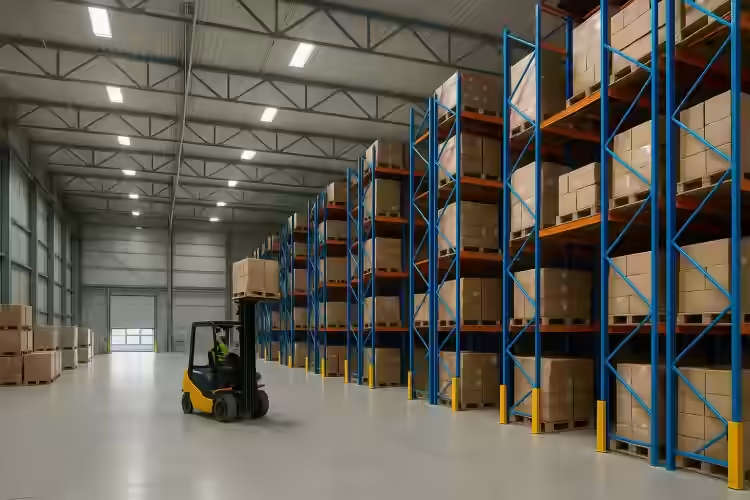How to Customize a Warehouse for Your Business Needs
Why Customizing a Warehouse Matters
Let’s start with the obvious: No two businesses run exactly the same way. So why should their warehouses all look and function the same? You wouldn’t run a high-throughput e-commerce operation in the same space you use to store heavy manufacturing equipment.It’d be like trying to race a Ferrari on a dirt road—technically possible, but not smart. Customizing a warehouse means molding the space to fit how you work. It’s not just about where the shelves go. It’s about efficiency, safety, and making your operations
future-proof. And in high-demand logistics hubs like
Chicago, Illinois or
Dallas, Texas, a properly customized warehouse can make or break your bottom line.
Step 1: Assess Your Business Needs
Before you start sketching floor plans, hit pause. First, understand what your business actually needs from a warehouse. Ask yourself: What are we storing—and in what volumes? Do we need temperature control? How often is inventory turning over? Are thereseasonal spikes? Do we need areas for assembly, packaging, or returns? If you’re an apparel brand, your needs will be light, fast-moving inventory with room for picking and packing. But if you’re in the auto parts game? You’re dealing with heavy items,
long shelving, and potentially hazardous materials. Also, consider the people using the space. Are there forklifts zipping around? Do staff need climate-controlled break areas? Every answer shapes the design.
Step 2: Plan the Layout
This is where things get interesting. A warehouse layout isn't just about maximizing square footage—it's about optimizing workflow. Think in zones: Receiving and Unloading: Near the loading docks, obviously. Minimize travel distance from dock to storage.Storage: Can be bulk, bin, shelf, or pallet depending on your inventory. Packing and Shipping: Needs space, light, and direct access to the shipping area. Returns or QA: Often overlooked, but critical if you’re in e-commerce. Use CAD tools or hire a warehouse
planner to map things out. It's worth it. Trust me—you'll save a ton on operational headaches down the road. And don’t forget vertical space! In cities like
Los Angeles, California where square footage costs a premium, going vertical is gold.
Step 3: Choose the Right Racking and Storage Systems
Racking is where customization really kicks into gear. Need quick access to hundreds of SKUs? Go with selective pallet racks. Storing uniform bulk goods? Consider drive-in or push-back racks. Got slow movers? Maybe a mezzanine system makes more sense.Other options: Cantilever racks for long items like pipes or lumber Mobile shelving to compress storage and free up floor space Carton flow racks for first-in-first-out (FIFO) operations One mistake we see a lot? Businesses installing racking based on
guesswork rather than actual SKU profiles. Don’t be that guy. Run the data first. Also, match your racking to your equipment. If you're using stand-up forklifts, your aisle widths can be tighter. Sit-down lifts? You'll need more clearance.
Step 4: Upgrade Infrastructure and Utilities
You might find the perfect warehouse shell—but the guts still need work. Let’s talk power. Are you running heavy equipment? You might need to upgrade to 3-phase power. Got a lot of tech stations or conveyor belts? That’s a draw too. Plumbing? Not justfor the bathrooms. Some operations need water access for cleaning, manufacturing, or cooling systems. Lighting is another huge one. Fluorescents are fine, but LED retrofits pay off in both brightness and utility bills. Especially in places like
Phoenix, Arizona, where cooling costs are already sky-high. Think of infrastructure like the nervous system. If it’s weak or outdated, the whole operation slows down.
Step 5: Integrate Warehouse Technology
Modern warehouses are smart warehouses. We’re talking: Warehouse Management Systems (WMS) Barcode scanners and RFID Automated picking systems Conveyor belts or even AGVs (automated guided vehicles) The level of tech you integrate depends on yourscale. But even smaller businesses benefit from a good WMS—it reduces picking errors, improves inventory accuracy, and streamlines shipping. And yes, Wi-Fi matters. You’d be surprised how many warehouses in
Atlanta, Georgia still struggle with spotty internet in the back corners. Plan your access points early.
Step 6: Focus on Safety and Compliance
This isn’t just red tape—it’s about keeping your team safe and your operations legal. Must-haves include: Clearly marked fire exits Proper ventilation (especially if you're storing chemicals or machinery) OSHA-compliant guardrails, signage, and protectivegear Regular fire suppression system checks Also, if you’re handling food or pharmaceuticals, you'll need to meet FDA and USDA standards. That means things like epoxy flooring, pest control protocols, and very tight environmental controls. Insurance
companies love a well-documented safety plan. And so does your HR department.
Step 7: Design for Flexibility and Growth
Today’s business isn't tomorrow’s business. The biggest mistake you can make? Building a warehouse that’s perfect for right now but useless in three years. Design with scalability in mind: Modular racking Moveable walls Extra electrical drops forfuture automation Empty zones that can be activated as demand grows Let’s say you’re a DTC brand ramping up in
Charlotte, North Carolina. Start lean—but have a plan to double your fulfillment area when orders take off. Flexibility keeps you agile. And in today’s market, agility is everything.
Final Thoughts
Customizing a warehouse might sound overwhelming. But think of it like tuning a car for the racetrack. Every tweak—from the layout to the lighting—shaves off inefficiencies and adds horsepower to your operation. So whether you’re launching a newfacility in
Houston, Texas or retrofitting a legacy site in
Newark, New Jersey, don’t settle for cookie-cutter space. Build it the way your business actually works. Your team, your customers, and your balance sheet will thank you. Want help finding a warehouse that’s ready to customize? That’s what we’re here for. Let’s talk.

